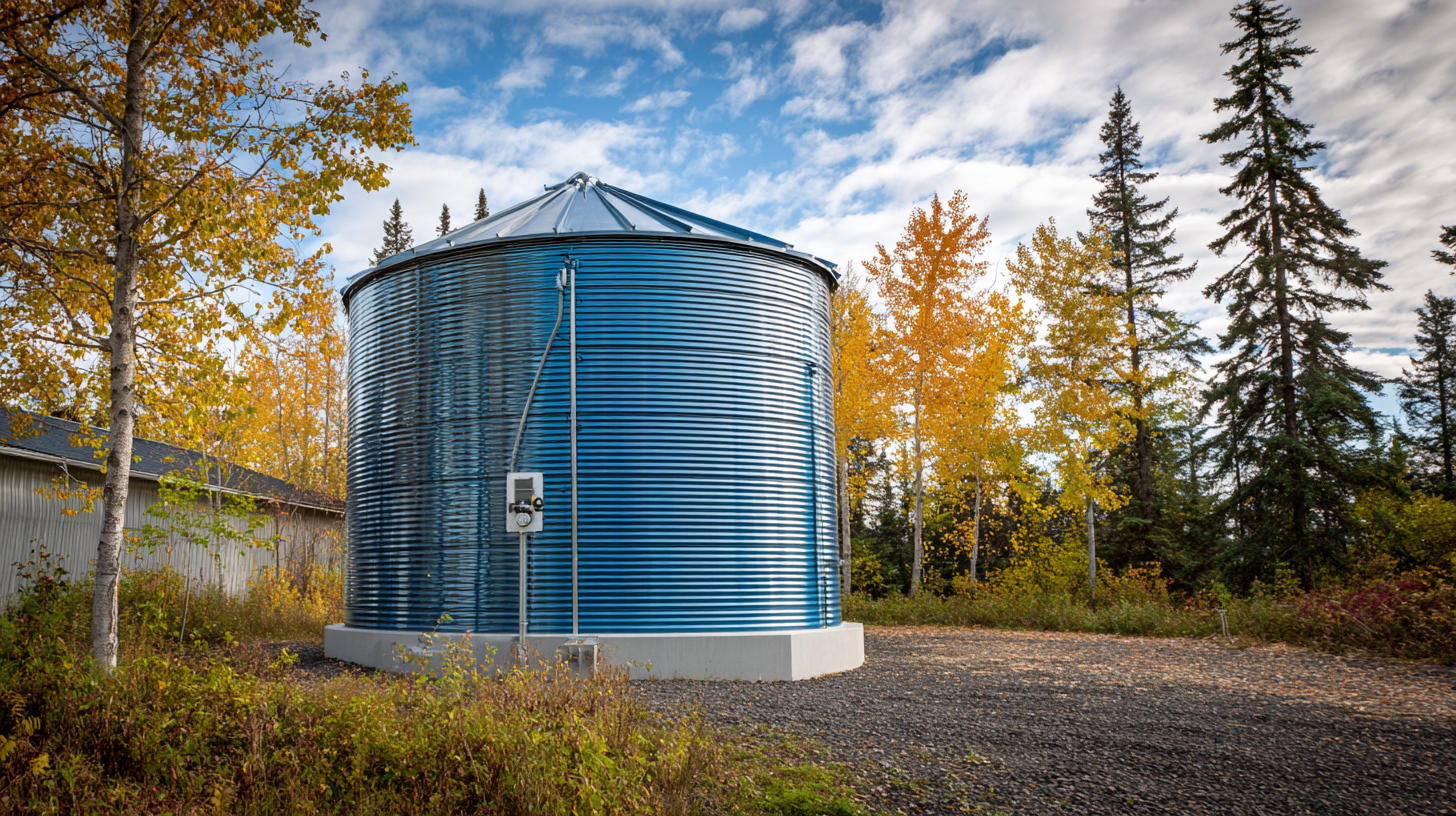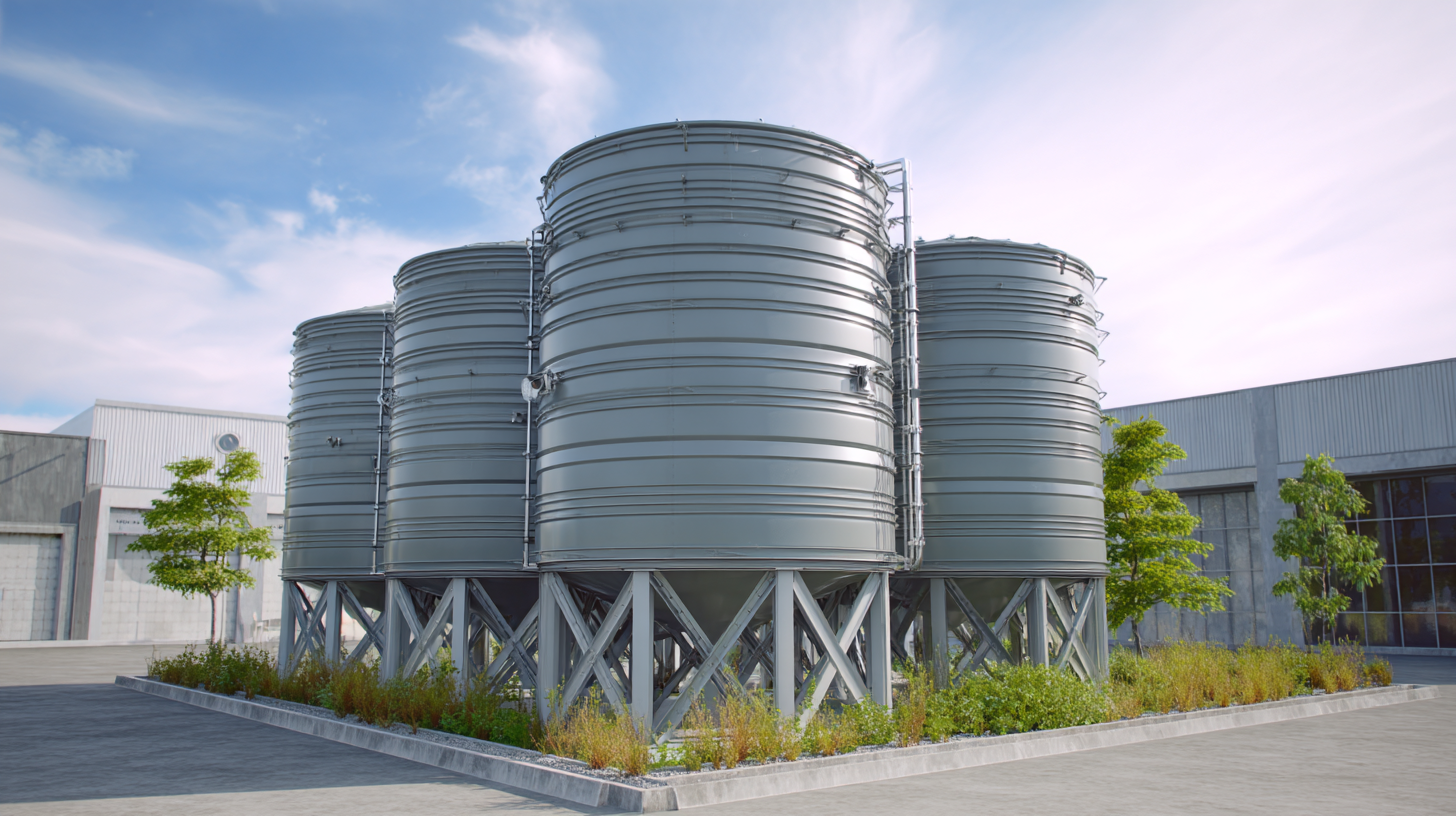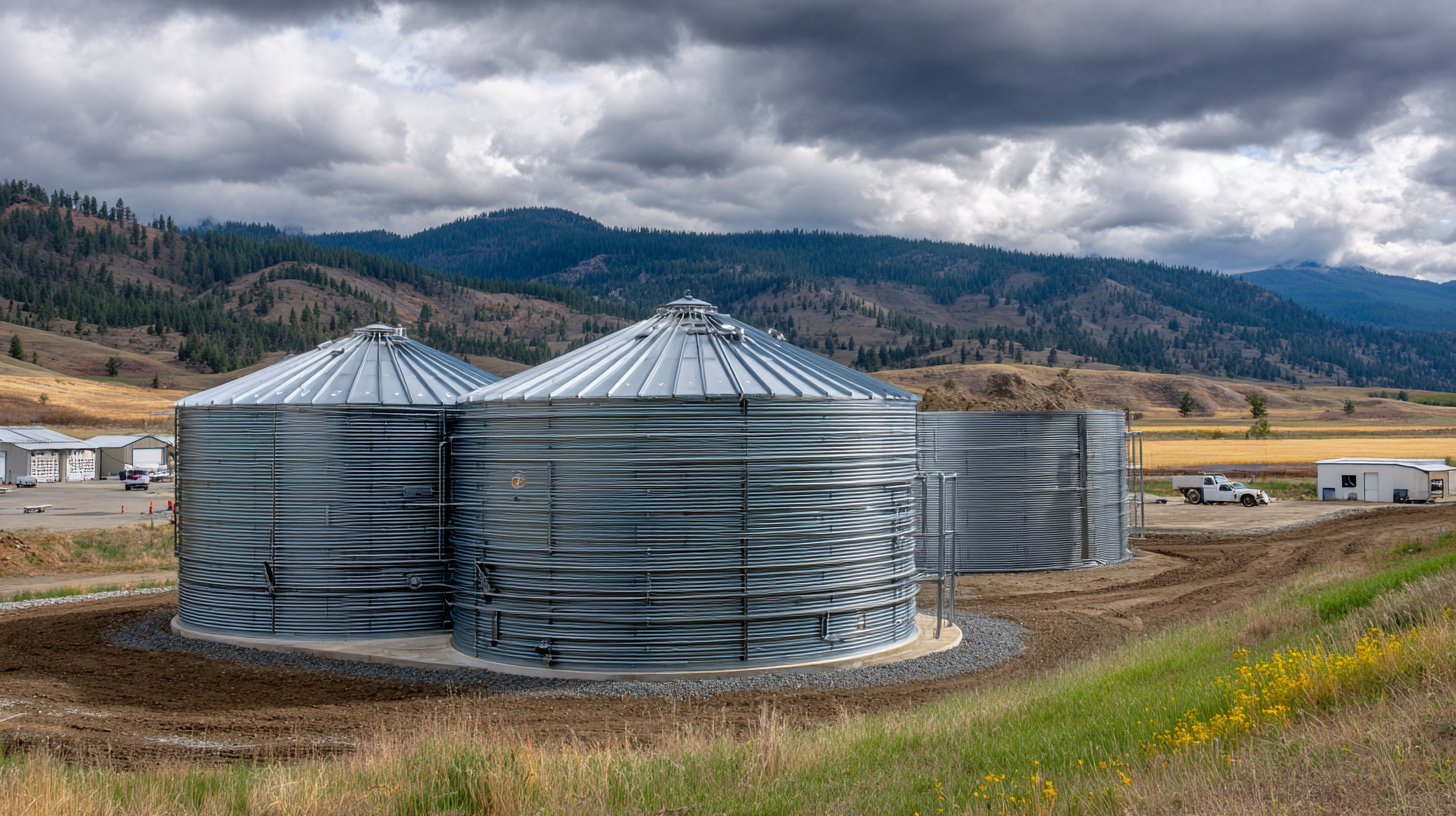Choosing the right water storage tank is crucial for both residential and commercial applications, especially in an era where water scarcity is a growing concern. According to a report by the Water Research Foundation, effective water storage solutions can improve water conservation by up to 30%, enabling users to optimize their water management strategies. The global water storage tank market is projected to reach $20 billion by 2025, with increasing demand driven by urbanization and agricultural needs. Selecting the appropriate water storage tanks involves understanding specific requirements such as volume, material, and installation conditions, which can significantly affect the sustainability and efficiency of your water system. Whether for rainwater harvesting, irrigation, or emergency supply, making an informed choice is essential to ensure reliability, safety, and environmental compliance.

When selecting a water storage tank, understanding the various types available and their specific applications is crucial. The three most common types are polyethylene tanks, fiberglass tanks, and steel tanks.
Polyethylene tanks are lightweight, corrosion-resistant, and ideal for residential applications where ease of installation is vital. They are suitable for rainwater harvesting and potable water storage, thanks to their sanitary properties and UV protection.
Fiberglass tanks, on the other hand, offer greater durability and are excellent for both above-ground and underground installations. Known for their ability to resist temperature fluctuations and corrosion, these tanks are often used in commercial applications, especially where chemical storage is involved.
Lastly, steel tanks provide high strength and longevity, making them suitable for industrial applications such as irrigation and fire protection systems. When choosing the right tank, consider factors like intended use, environmental conditions, and space availability to ensure optimal performance and longevity.
When selecting a water storage tank, evaluating the storage capacity is crucial for ensuring that it meets your specific needs. According to the Water Quality Association, understanding your water usage patterns can significantly influence the ideal size of your tank. For instance, a family of four typically requires around 70 to 100 gallons of water per day for various household activities. This indicates that a tank with a capacity of at least 500 gallons might be necessary to ensure adequate supply during peak usage times.
Additionally, other factors should be considered when determining optimal sizing. The American Water Works Association recommends accounting for seasonal variations, which can affect water demand. In areas with high water usage during summer months, tank capacities should be adjusted accordingly to handle increased storage needs. Furthermore, the frequency of water delivery or replenishment plays a vital role; for example, homes relying on truck delivery may require larger tanks to minimize delivery frequency while maintaining sufficient supply. Evaluating these considerations will help ensure that your water storage solution is not only adequate but also efficient.
 When selecting a water storage tank, the choice of material plays a crucial role in determining its performance, sustainability, and overall cost-effectiveness. Plastics offer flexibility and resistance to corrosion, making them suitable for various applications, but their long-term environmental impacts raise concerns. On the other hand, steel tanks are known for their durability and strength, particularly in industrial settings. However, recent advancements in sustainable building materials highlight the potential of alternative materials like fiber-reinforced concrete, which combines strength with eco-friendly properties. This innovation reflects a growing trend towards materials that minimize environmental footprints while ensuring structural integrity.
When selecting a water storage tank, the choice of material plays a crucial role in determining its performance, sustainability, and overall cost-effectiveness. Plastics offer flexibility and resistance to corrosion, making them suitable for various applications, but their long-term environmental impacts raise concerns. On the other hand, steel tanks are known for their durability and strength, particularly in industrial settings. However, recent advancements in sustainable building materials highlight the potential of alternative materials like fiber-reinforced concrete, which combines strength with eco-friendly properties. This innovation reflects a growing trend towards materials that minimize environmental footprints while ensuring structural integrity.
As technology progresses, the development of composite materials has also emerged as a viable option for water storage solutions. Utilizing materials such as glass fiber reinforced polymer (GFRP) can provide a lightweight yet robust alternative to traditional options. This evolution in material selection not only enhances performance but also supports economic viability in construction. By choosing the right material, users can achieve efficient water storage while aligning with sustainable practices that address both current and future building needs.
When considering the installation of a water storage tank, understanding local regulations and compliance requirements is crucial. Different regions have specific guidelines regarding tank placement, size, and materials. For instance, many municipalities require permits before installation and have restrictions on tank types to ensure environmental protection and safety. It's essential to review local building codes and consult with local authorities to ensure your tank meets all necessary criteria.
**Tip:** Research your area’s zoning laws and environmental regulations before you start. This will not only help you avoid fines but also prevent costly modifications after installation.
Additionally, compliance may include considerations for health standards—especially if the water is intended for drinking. Tanks must often be certified for potable water, and the quality of materials used is regulated. Familiarizing yourself with these health regulations can save you from potential legal issues down the line.
**Tip:** Consider reaching out to local environmental agencies or professional consultants who specialize in water management systems. They can provide valuable insights and assistance in navigating the regulatory landscape, ensuring your water storage solution is compliant and efficient.
| Tank Type | Material | Capacity (Gallons) | Local Regulations | Estimated Cost ($) |
|---|---|---|---|---|
| Plastic Tank | Polyethylene | 250 | Permits required in some regions | 200 |
| Steel Tank | Galvanized Steel | 1000 | Must meet fire department regulations | 800 |
| Fiberglass Tank | Fiberglass Reinforced Plastic | 500 | Compliance with environmental regulations | 600 |
| Concrete Tank | Concrete | 2000 | Building permits required | 1500 |
When selecting the right water storage tank, budgeting for purchase, installation, and maintenance is crucial. It's essential to have a clear understanding of the costs associated with different tank types and their respective capacities. According to industry reports, the global water storage tank market is expected to witness significant growth, potentially reaching a valuation of over $200 billion by 2032, emphasizing the rising demand for effective water management solutions.
The initial purchase price of water storage tanks can vary widely based on materials and sizes. For example, a polyethylene tank may be more affordable upfront compared to a fiberglass or steel tank, which could offer longer lifespans but at a higher cost. Installation expenses also vary; complex installations may require professional assistance, driving up costs. Therefore, it's advisable to factor in potential maintenance expenses, which can lead to long-term savings. Regular inspections and repairs are essential to extending the tank’s lifespan, which can ultimately influence the overall cost-effectiveness of your water storage solution.







